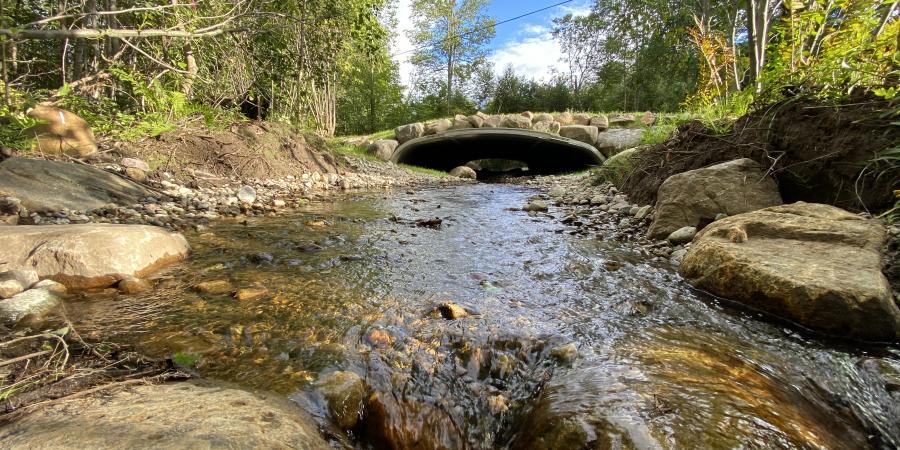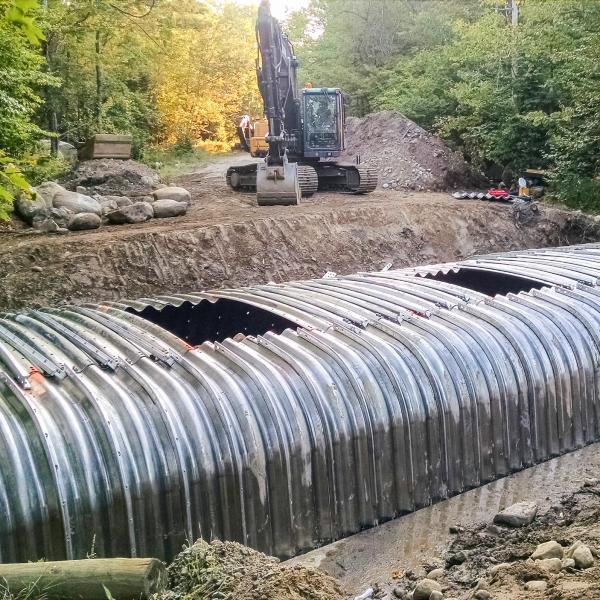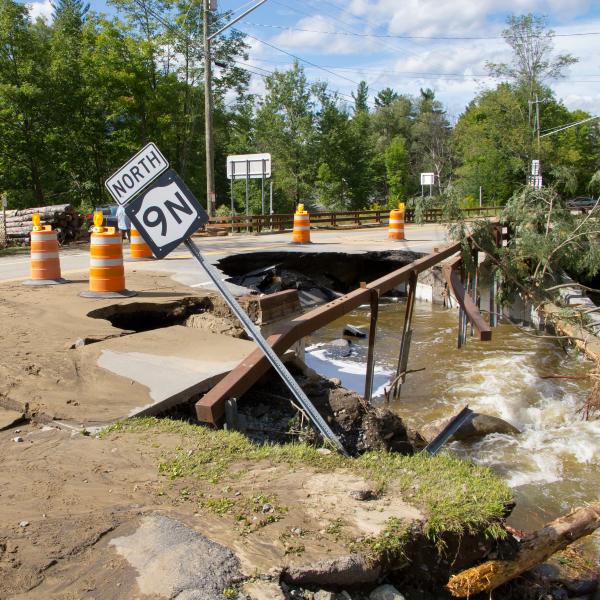Working with many partners, Ausable River Association staff developed a model for replacing undersized and deteriorated culverts on streams and rivers that pass under roads. Since 2014, working with local crews and with funds from public and private donors, we've installed eleven of these model "climate-ready" culverts. At first glance, going from a 30-40" pipe to a 12 to 19 foot wide culvert seems extreme. But improving road-stream crossings - sizing them to respect the needs of the stream - has multiple benefits for communities. Here are three reasons why our climate-ready culverts make a difference for our communities and the health of our streams.
1. Flood resilience
One of the key lessons for our communities in the wake of Tropical Storm Irene was that undersized pipe culverts carrying streams under roads were a recipe for disaster. Storm water from the record-breaking rainfall in the Ausable valley cleaved through roadways, blowing out debris-filled or overwhelmed pipe culverts or just channeling around them, creating devastation in too many communities. Instead, climate-ready culverts are sized to carry a 100-year flood at 80% of their capacity. They improve public safety during storm events by allowing high flows to pass freely, reducing damage to roads and property as well as emergency response costs. Right-sizing culverts and restoring streams also shrinks town maintenance costs. A climate-ready culvert is expected to last at least 70 years, and a town road crew doesn't need to worry about it in a storm.
2. Fish Passage
In our shifting climate, scientific modeling indicates that the Ausable watershed is one stronghold for native brook trout in the northeastern U.S. The cold-water tributaries of the West and, especially, the East Branch Ausable River are priceless habitat for this threatened species. Brook trout can't jump – five to eight inches is a decent jump for an adult brookie, and 10 to 12 inches is unusual. This matters because the hydraulic forces of stormwater moving through an undersized pipe creates a water cannon on the downstream end. Water blasts from the pipe, scouring the downstream bed and banks of the channel outlet, leaving the pipe perched far above the water surface – too high for a brookie to jump. It limits their access to essential cool waters in the summer, a matter of life and death for an individual fish. But it isn't just about native fish. Frogs, salamanders, turtles, mink, fox, and even deer benefit from access to these protective corridors. It's about connectivity of habitat for wildlife to live, breed, forage, and find safety.
3. Stream Health
Culvert replacements are prioritized by their public safety and fish passage benefits, but the greatest long-term benefit of a climate-ready culvert may be in freeing a stream and restoring its slope, width, shape, natural substrate, and riparian structure. These are the physical features formed by surface waters flowing through an undisturbed stream channel. These features adjust and manage flows, creating what scientists describe as dynamic stability – the state in which a stream is most resilient to natural changes. A resilient Adirondack stream with access to its floodplain can handle a flood or a downed tree in its channel. Its waters will be well oxygenated and amply shaded by native plants. Macroinvertebrates and insects will thrive. Deep pools, downed wood, and gentle undercuts in banks provide habitat and hiding spots for aquatic wildlife, including native fish. Installing a climate-ready culvert includes restoring the stream well above and below it. We gather detailed information about the stream's morphology, then replicate and rebuild it in the channel immediately above, in, and below the culvert. Our goal is to identify and restore the stream's potential. When we get it right, the stream takes it from there.
Support our work to replace undersized and deteriorated culverts. Give with confidence today!

Top photo: AsRA Otis Brook 2 at Jay Mountain Road, a 2020 replacement. Above: Larry Master photo of Otis Brook 1 at Jay Mountain Road, a 2016 replacement on a steep gradient stream.
Story written by Kelley Tucker, Executive Director. Sign-up for our e-newsletter to get weekly updates on the latest stories from the Ausable River Association.





